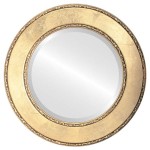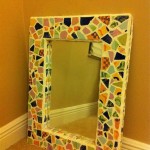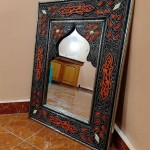Jute Work on Mirrors: A Rustic and Elegant Decorative Trend
Jute, a natural fiber derived from the jute plant, offers a unique blend of rustic charm and textural richness. Its versatility extends to various decorative applications, including its increasingly popular use in mirror adornment. Jute work on mirrors provides a simple yet impactful way to enhance interior spaces, adding warmth and an organic touch to both modern and traditional aesthetics.
The appeal of jute lies in its inherent sustainability. As a fast-growing, renewable resource, jute presents an environmentally conscious choice for crafting and decoration. Its biodegradable nature further contributes to its eco-friendly profile. This aspect aligns with the growing consumer preference for sustainable and ethically sourced materials in home decor.
The process of incorporating jute into mirror design involves various techniques. One common method is wrapping the mirror frame with jute rope or twine. This technique provides a straightforward way to transform a plain mirror into a statement piece. Varying the thickness and texture of the jute allows for customization, creating everything from a delicately textured border to a boldly wrapped frame.
More intricate designs involve weaving or braiding jute to create intricate patterns on the mirror frame. This labor-intensive approach yields a unique and handcrafted look. Skilled artisans can create complex geometric designs or incorporate floral motifs, elevating the mirror from a functional object to a work of art. These handcrafted pieces often become focal points, adding a touch of individual character to a room.
Jute's neutral color palette offers a versatile backdrop for various design schemes. Its natural beige or light brown hues blend seamlessly with a wide range of colors and textures. This adaptability makes jute-adorned mirrors suitable for diverse interior styles, from minimalist and Scandinavian to bohemian and rustic.
Beyond aesthetics, jute work on mirrors also offers practical benefits. The added texture of the jute frame can provide a more secure grip, especially for larger mirrors. Furthermore, the jute can act as a buffer, protecting the mirror's edges from minor bumps and scratches. This protective layer enhances the mirror's durability and longevity.
The application of jute on mirrors is not limited to framing. Designers are increasingly exploring innovative ways to incorporate jute into the mirror itself. Jute can be used to create decorative accents on the mirror surface, adding subtle patterns or textured details. This technique adds depth and visual interest without overpowering the mirror's functionality.
Combining jute with other natural materials like wood, bamboo, or shells further enhances its rustic charm. A wooden frame wrapped with jute, for instance, creates a harmonious blend of natural elements. Similarly, incorporating small shells or beads into the jute work adds a touch of coastal or bohemian flair.
The versatility of jute extends beyond its aesthetic applications. Its natural fibers offer inherent strength and durability, making it a suitable material for reinforcing the backs of mirrors. This added layer of protection helps prevent damage during handling and transportation.
Maintaining jute-adorned mirrors is relatively straightforward. Regular dusting with a soft cloth or brush is usually sufficient to keep the jute clean and free from dust buildup. For more stubborn stains, a damp cloth with a mild detergent can be used, taking care to avoid excessive moisture, which can damage the jute fibers.
The increasing popularity of jute work on mirrors reflects a broader trend towards incorporating natural and sustainable elements into interior design. Jute's unique texture, neutral color palette, and eco-friendly nature make it an appealing choice for those seeking to create a warm and inviting atmosphere in their homes. The relative simplicity of the techniques involved also makes it a popular choice for DIY enthusiasts looking to add a personalized touch to their decor.
The availability of jute in various forms, from raw fibers to pre-made ropes and twines, further contributes to its accessibility. This accessibility, coupled with its affordability, makes jute a practical and attractive option for a wide range of decorating projects. Whether used to create a simple frame or an intricate design, jute's natural beauty adds a touch of understated elegance to any space.
The incorporation of jute into mirror design exemplifies the potential of natural materials to transform everyday objects into decorative elements. Its sustainable nature, coupled with its versatility and aesthetic appeal, positions jute as a key material in the ongoing evolution of eco-conscious interior design.

Looking Mirror Made Of Jute Flowerssold For Rs 2000 Ayna

Handicrafts Jute Craft Mirror

How To Make Jute Rope Wall Hanging Mirror Entryways Decor

Jute Mirror Single Round Boho Wall Decor Diy

Baba Beena Handicraft Jute Mirror

Jute Mirror Single Round Boho Wall Singapore

How To Make A Jute Rope Mirror Diy Just That Perfect Piece

Print Pie Handicrafts Round Wall Mount Nautical Jute Mirror Covered With Rope Loop

Jute Handmade Mirror Natural Boho Home Decor Vintage New Zealand

Easy Diy Jute Rope Mirror Nautical








